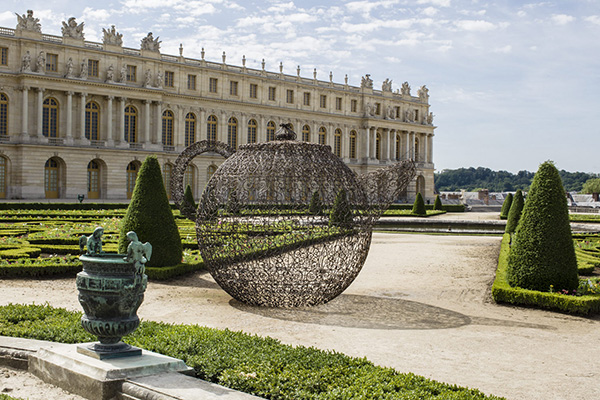A review of two sculptures by Joana Vasconcelos, “Pavilion de Thé” in wrought-iron and “Marilyn” compiled of stainless steel saucepans and lids
Background
Joana Vasconcelos was born in Paris in 1971. She lives and works in Lisbon. Joana has exhibited regularly since the mid-1990s. She works in many media types including traditional crochet, wrought iron and polished stainless steel.
Highlights
After her participation in the 51st International Art Exhibition– la Biennale di Venezia in 2005, Joana’s work became known and respected internationally.
Recent highlights of her career include:
- Trafaria Praia, project for the Pavilion of Portugal at the 55th International Art Exhibition– la Biennale di Venezia (2013);
- A solo exhibition at the Château de Versailles, France (2012);
- Participation in the group exhibition ‘The World Belongs to You’ at the Palazzo Grassi/François Pinault Foundation, Venice (2011);
- and her first retrospective, held at the Museu Coleção Berardo, Lisbon (2010).
Vasconcelos has had solo exhibitions and projects including those at the Manchester Art Gallery (2014); the Tel Aviv Museum of Art (2013) and Palácio Nacional da Ajuda, Lisbon (2013).

Pavillon de Thé, 2012 by Joana Vasconcelos
Pavilion de Thé
Pavilion de Thé consists of an enormous but very delicate metal structure in traditional wrought iron – a teapot -covered and decorated with vegetation – jasmine leaves to be exact. My favorite tea! The piece imposes a monumental presence, capturing the attention of the audience. In the iron bars that give the teapot its form, Joana has used the influences of many distinctive patterns of traditional fence and balustrades designs which can be seen throughout different city and rural landscapes around Europe.
The object takes the form of a veritable arbor-sculpture, these are sculptures are usually formed using topiary. The work shows an idealized combination of the natural world and the encroaching industrial world.
The wrought iron is used as an architectural element, which is both functional and highly decorative. The wrought iron give the piece its form, the form give the piece its beauty.
Jasmine is well known as the plant whose delicately scented flowers are commonly used to scent green tea, highlights the connection between the object and the custom of tea drinking.
In this respect, let us mention the subtle historical allusion present in the piece that highlights the leading role taken on by the Portuguese in the introduction of tea into Europe.
European habits of consumption after their arrival in the East, having brought back to Portugal shiploads of tea which would then be exported to several European ports; or the example of Catherine of Braganza (1638-1705), Portuguese Infanta and Queen Consort of England and Scotland, to whom is also attributed the role of having introduced the custom of drinking tea into the English court.
Assertive historical and cultural references and allusions to the urban, rural, domestic and public reality work together in a strategy of appropriation, de-contextualization and subversion of banality, transporting the spectator to a universe that challenges the programmed routines of the quotidian; a strange and simultaneously familiar world.
Marilyn

Marilyn by Joana Vasconcelos, 2009
Polished Stainless steel pans and lids, concrete, 270 x 150 x 430 cm
Amorepacific Museum of Art, Seoul
Work produced with the support of Silampos
Marilyn takes the form of an elegant pair of high-heeled strapless shoes. The sculpture is formed from stainless steel saucepans and their lids.
Positioned almost symmetrically, the pair refers to Marilyn Monroe’s absent figure. The unlikely yet assertive association between the saucepans and high-heeled shoes which are symbols of Woman’s private and public spheres.
By inverting the symbolism of female domesticity with female romanticism Vasconcelos is making a deeply ironic and satirical statement on the lives of women today.
The piece is meant to represent the outmoded and clichéd role of the domestic and romantic side of woman’s daily life.






